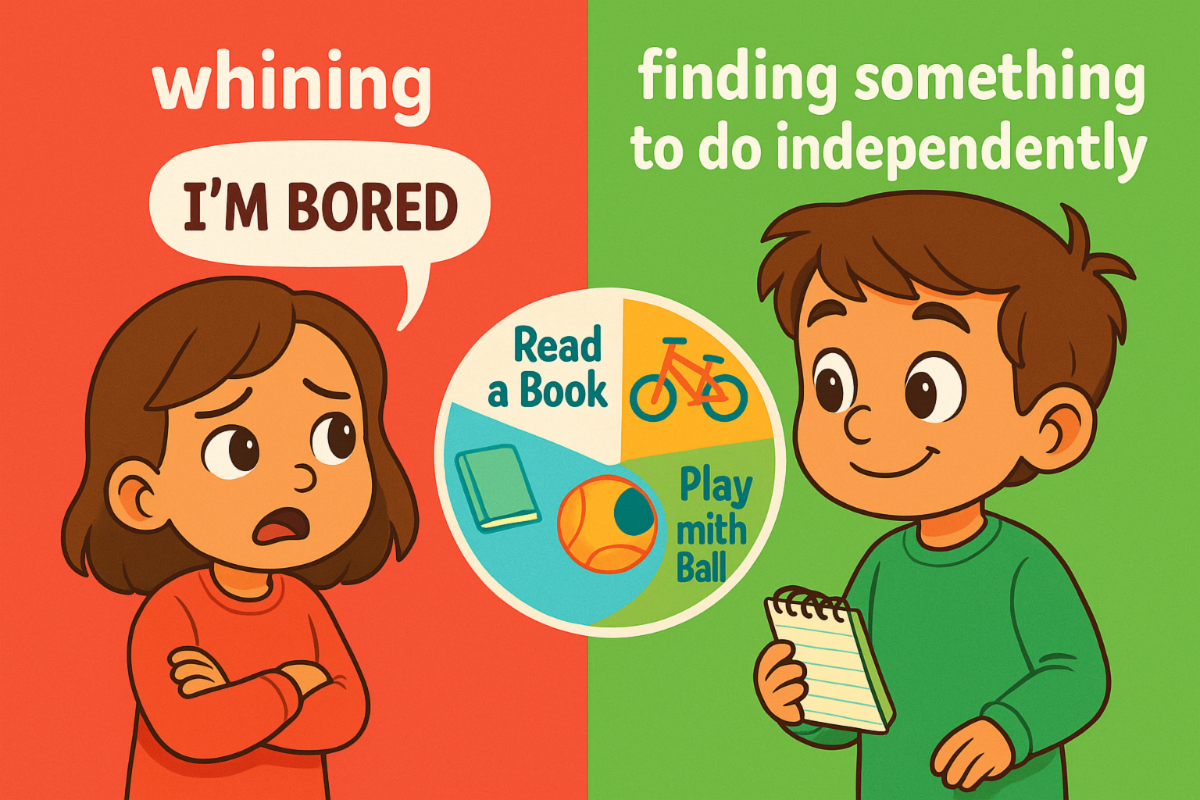
(2 minute read)
When “What Do You Want to Do About It?”
Doesn’t Work
After the last blog post on solving children’s boredom, a mom emailed me the following:
I’ve been doing that in all different ways… more subtle or less—spread out, not annoyingly repetitive—and all attempts have gotten my daughters to just get annoyed. They mostly still haven’t been able to solve boredom, even some of the time…
What do we do now??
The good news is that there are more solutions to this common problem.
Some children genuinely lack the skills, ideas, or creativity to manage their boredom independently. In those cases, we need to teach the skill—step by step—using a clear structure and visual support.
✅ Try This: A Visual Pie Chart + RGBT’s 6 Steps to Teaching a Social Skill
Step 1: Label
State that “whining ‘I’m bored’” is a red behavior. A green behavior is “finding something to do independently.”
Step 2: Picture
a. Create a pie chart with 6–8 age-appropriate activity options your child has enjoyed before. This becomes their go-to reference.
b. Create a red-and-green visual showing “whining ‘I’m bored’” versus “finding something to do independently.”
Step 3: Model
Pretend you’re the child. Say aloud, “Hmm, I’m bored. I’m not going to whine—I’ll find something to do,” then go to the chart and pick an activity.
To make it even more fun, ask your child to be the videographer and record you modeling both the red and green behaviors.
Step 4: Practice
Have your child rehearse the same script and action: “I’m bored. I’m going to the chart. I choose __.”
Most children enjoy role-playing the reds even more than the greens. Allow them to do so, and videotape both versions.
Children learn a great deal from watching the video clips. Let them watch the recordings from Step 3 and Step 4.
Step 5: Reinforce
Praise and reward your child both during practice and in real-life moments when they use the chart instead of whining.
Step 6: Correct
If they keep nagging, calmly redirect:
“You can be pleasant in public or whine privately in your room. When you’re ready to find something to do, come out and check the chart.”
The Logic Behind It
Kids may dislike boredom because it’s uncomfortable—but some actually enjoy the reaction and drama they get from whining and nagging. It brings attention and interaction with parents, even if it’s negative.
Teaching them to redirect to a visual chart gives them clarity, structure, and eventually, independence.
Reinforcement builds the habit. Correction de-incentivizes the drama.
Over time, they learn:
Boredom isn’t something to dump on others—it’s something they can manage themselves.
And that’s a skill they’ll need for life.
Enjoy the sunshine (when the flash floods subside)!
Yours,
Dr. Devora
